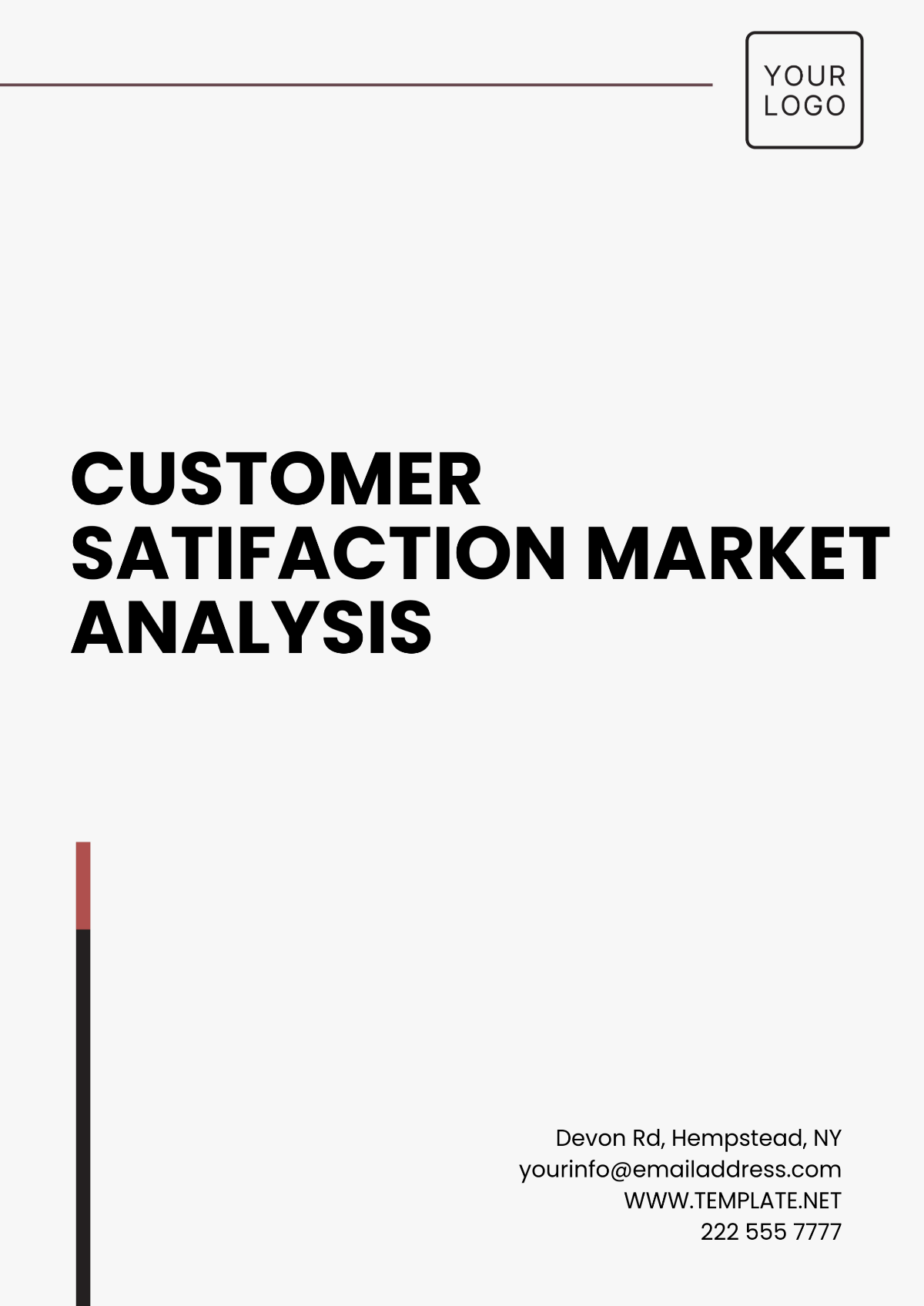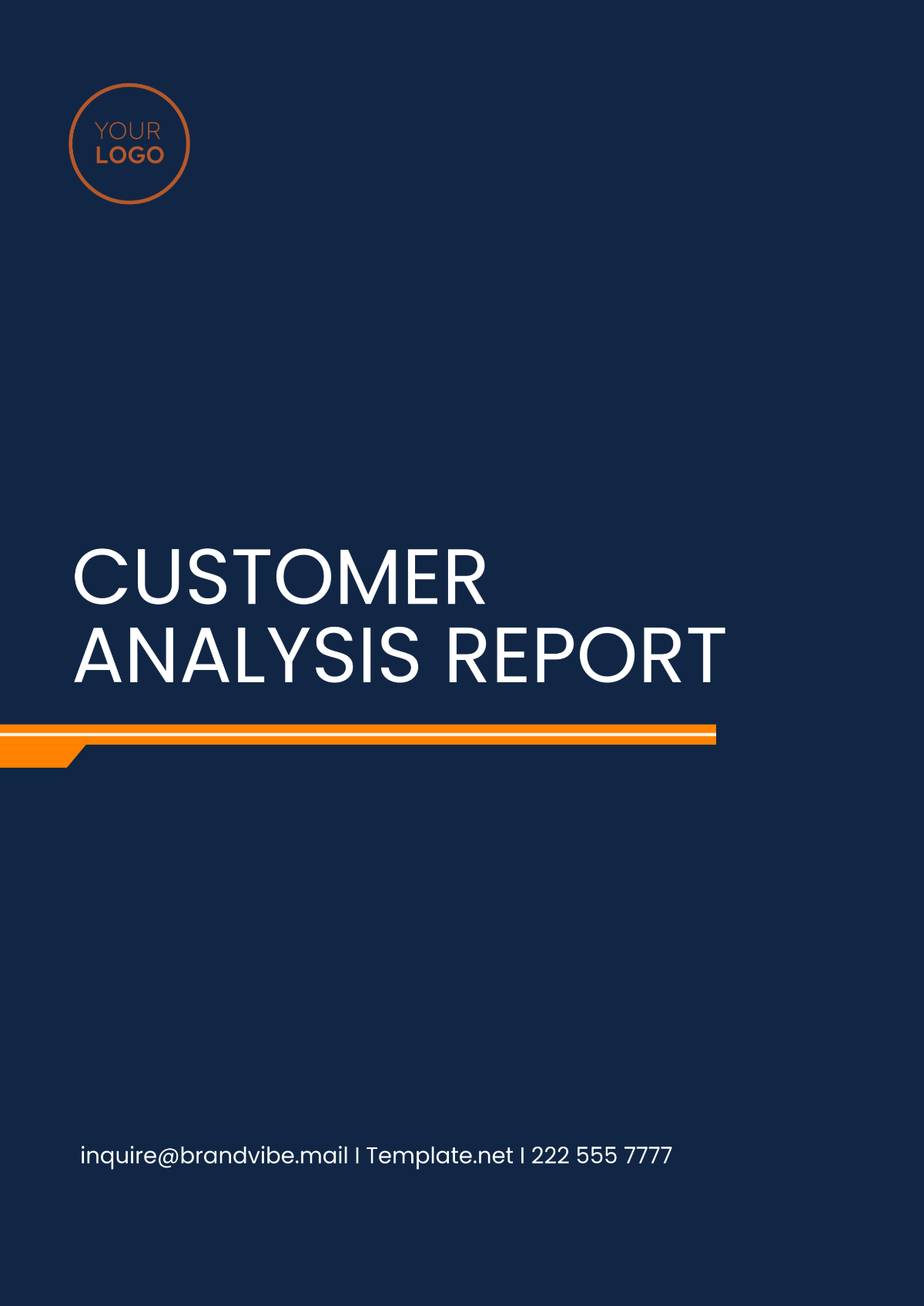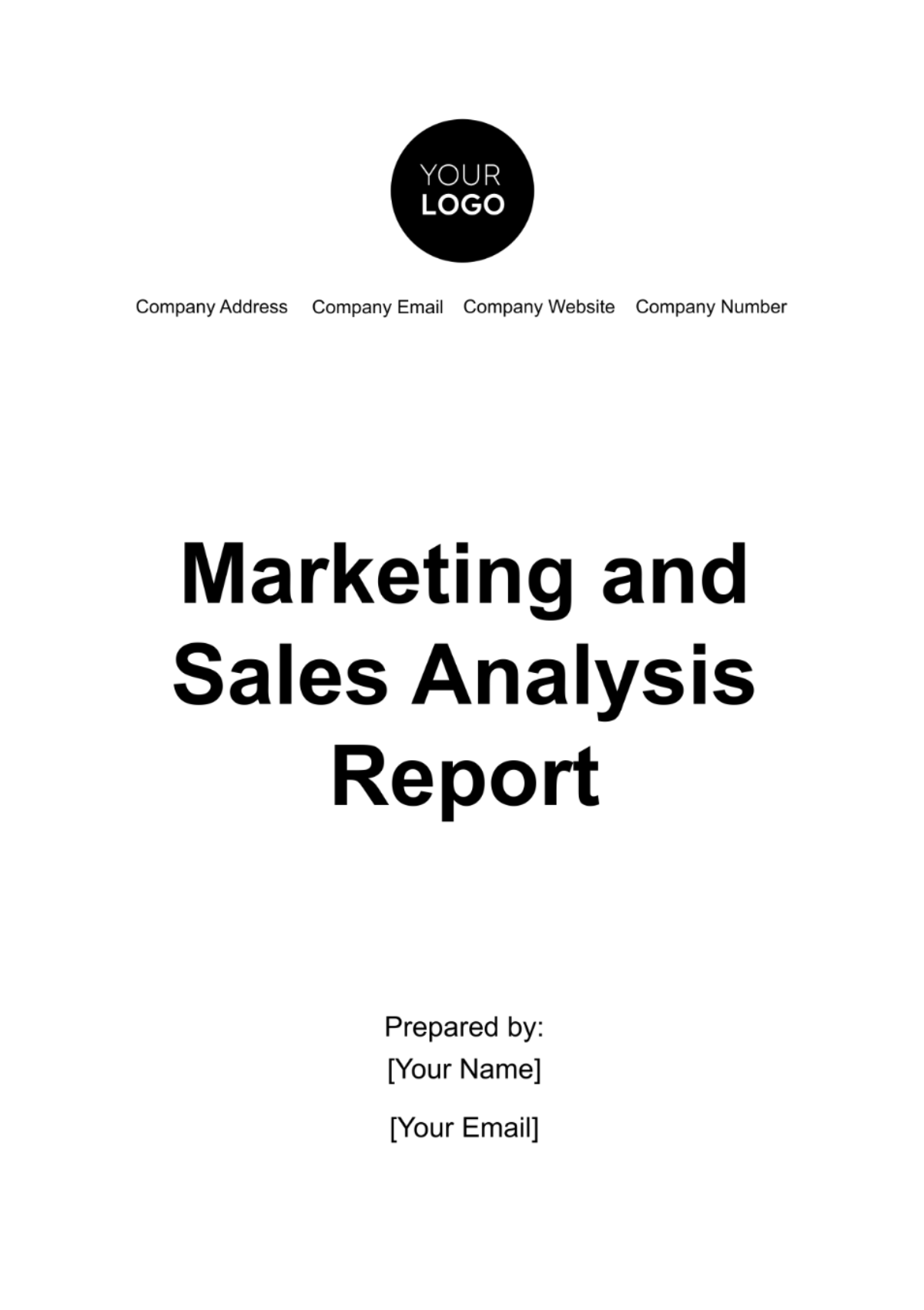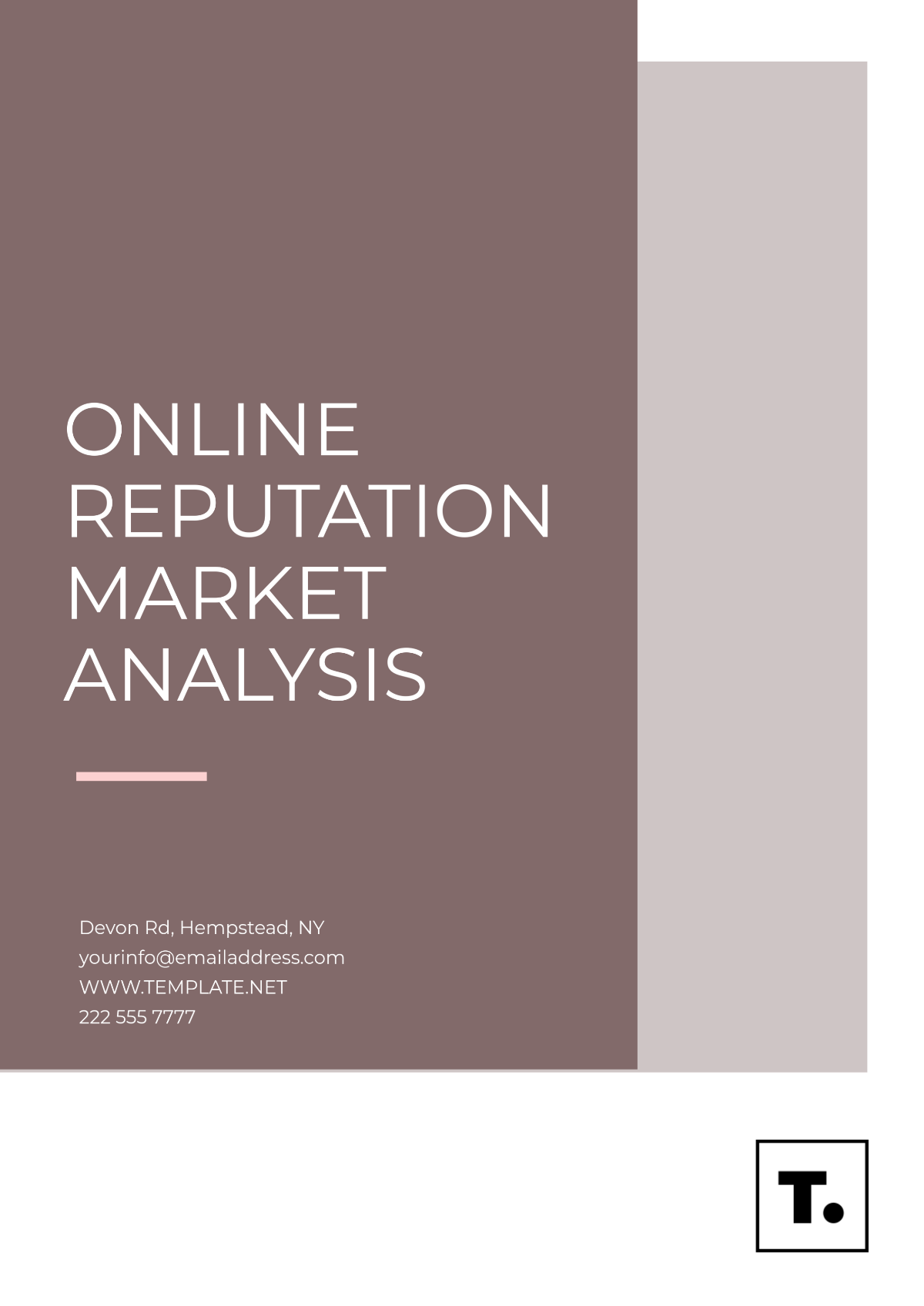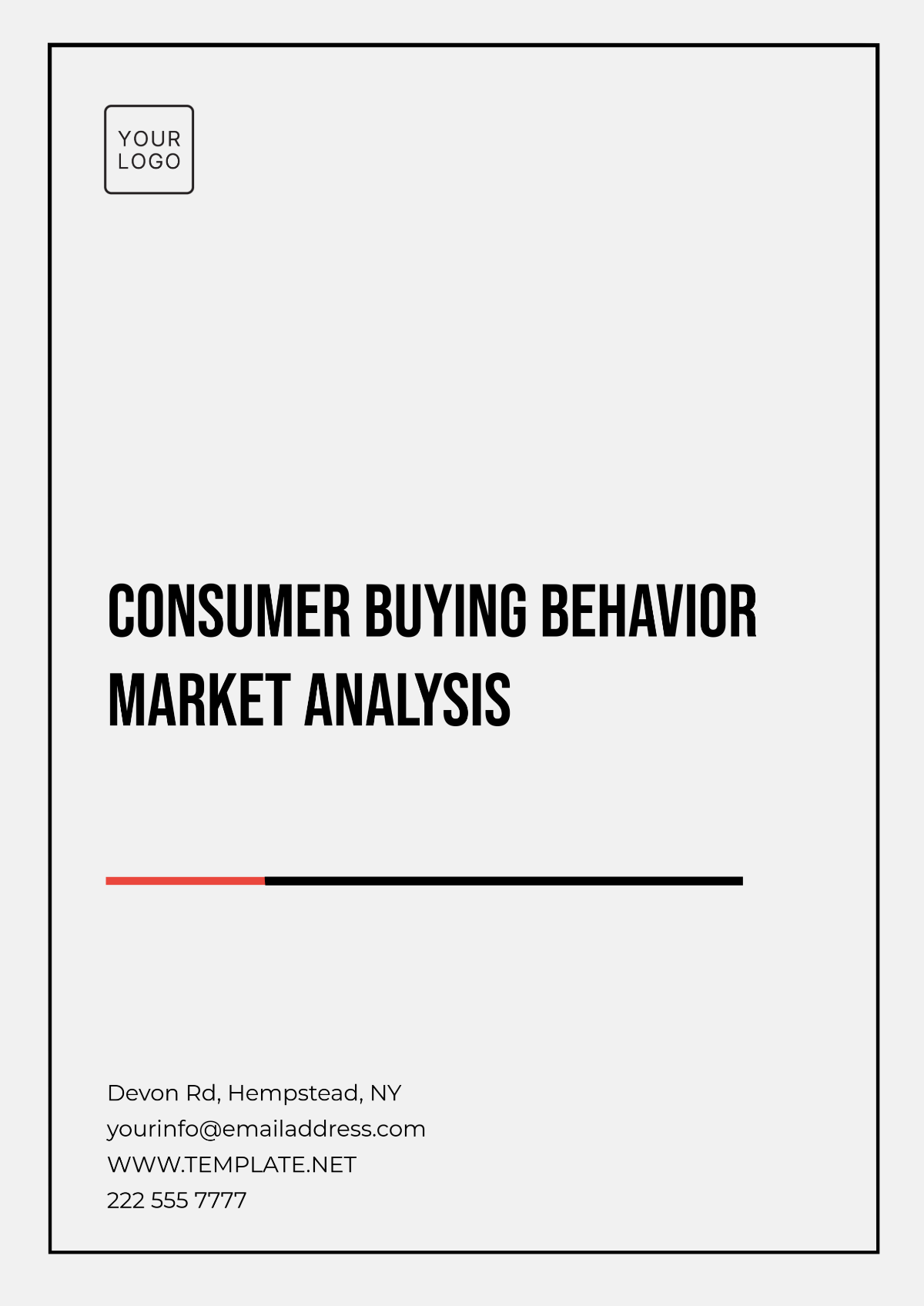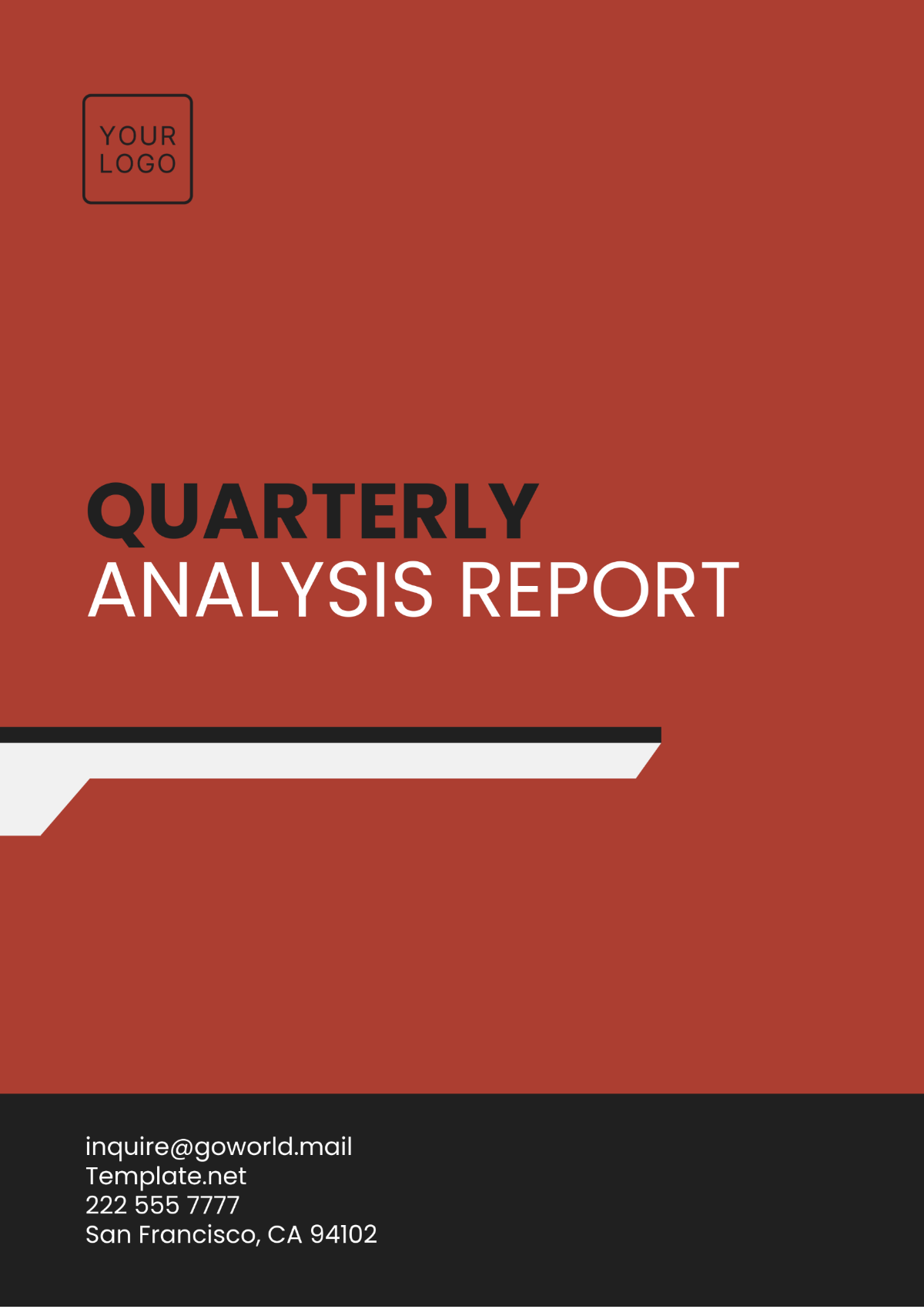Marketing Market Metrics Analysis
1. Executive Summary
In today's data-driven business landscape, the importance of quantifiable metrics cannot be overstated. For entities operating within the [Specific Market], understanding these metrics is paramount to achieving and maintaining a competitive edge. This report, dedicated to [Your Company Name], presents a meticulous Marketing Market Metrics Analysis, designed to shed light on the company's current standing, its performance trajectory, and potential areas of improvement.
Gleaned from exhaustive research and advanced data analytics methodologies, the report encompasses a broad spectrum of essential metrics. These range from overarching market performance indicators to intricate details that help decode customer behaviors and preferences. Furthermore, it provides an in-depth analysis of the competitive landscape, allowing [Your Company Name] to understand its position relative to its peers and identify opportunities or threats. In the digital age, the report also delves into key digital marketing metrics, giving a clear picture of the company's online presence and engagement levels.
The ultimate aim of this document is empowerment. The insights provided are not just numbers on a page; they are tools tailored to guide [Your Company Name]'s strategic decision-making, ensuring that the company remains agile, proactive, and poised for sustained success in the Georgia.
2. Introduction
In the intricate world of marketing, metrics serve as the compass guiding businesses through a landscape of ever-evolving challenges and opportunities. These quantitative indicators, reflecting performance, behaviors, and outcomes, offer organizations like [Your Company Name] a lens to view their efforts' efficacy and, more importantly, areas of potential improvement. In an age where data is invaluable, understanding and interpreting these metrics is essential to craft informed strategies, adjust trajectories, and ultimately achieve business objectives. This report endeavors to provide a comprehensive exploration into these critical metrics. Through its pages, we aim to unravel the complexities and nuances of Georgia, detailing how specific indicators influence, and are influenced by, [Your Company Name]'s operations. By the end, readers will have a holistic understanding of [Your Company Name]'s market position, its strengths, areas of opportunity, and the roadmap ahead.
3. Market Metrics Overview
To comprehend the intricate dynamics of Georgia, it's essential to anchor our understanding in concrete figures. Metrics, especially those that reflect the market's size, its growth trajectory, and a company's share within that market, offer valuable insights into past performance and potential future trends. For Georgia, these metrics serve as vital indicators of its standing within the market, its growth relative to the market, and its potential areas of expansion or consolidation. The following table provides a snapshot of these crucial metrics for the years 2050 and 2051.
From the presented data, we observe a consistent and steady growth in Georgia across the two years. The slight dip in the growth rate from 2050 to 2051 might indicate market saturation or other influencing factors. Notably, [Your Company Name]'s market share has seen a positive uptick, suggesting effective strategies or a stronger value proposition than its competitors. As we delve deeper into this report, these metrics will serve as a foundational reference, allowing us to contextualize further findings and recommendations.
4. Key Performance Indicators (KPIs)
In the realm of marketing, Key Performance Indicators (KPIs) are indispensable. They serve as the heartbeat, providing real-time insights into the health, effectiveness, and ROI of marketing initiatives. For businesses like [You Company Name], these indicators help gauge the success of campaigns, the efficiency of marketing spends, and the overall resonance of their value proposition with their target audience. By understanding the trajectory of these KPIs over time, companies can refine strategies, allocate resources more effectively, and drive optimal results.
Table: Key Performance Indicators for [Your Company Name]
KPI | 2050 | 2051 |
Customer Acquisition Cost | $250 | $230 |
Customer Lifetime Value | $2,500 | $2,600 |
Return on Marketing Investment | 300% | 310% |
Conversion Rate | 5.2% | 5.5% |
A detailed analysis reveals:
Customer Acquisition Cost (CAC): There's a notable decrease from 2050 to 2051. This suggests that [Your Company Name]'s methods of acquiring new customers became more efficient or cost-effective in 2051.
Customer Lifetime Value (CLV): An increase in CLV indicates that [Your Company Name] has successfully enhanced the overall value of a customer over their engagement lifecycle. This could result from upselling, cross-selling, or higher retention rates.
Return on Marketing Investment (ROMI): The upward trend suggests that for every dollar spent on marketing, [Your Company Name] realized an even greater return in 2051 compared to 2050, indicating more effective marketing strategies or campaigns.
Conversion Rate: The increase from 2050 to 2051 highlights that a larger percentage of [Your Company Name]'s prospects or leads were converted into customers in 2051, indicating enhanced marketing or sales effectiveness.
In essence, the KPIs reflect a positive trajectory for [Your Company Name] in Georgia, suggesting effective strategies and a strong alignment with market dynamics and customer needs.
5. Customer Analysis Metrics
Customer-centricity is more than just a buzzword; it's the bedrock of successful businesses in today's competitive landscape. Understanding customer behaviors, gauging their satisfaction, and measuring their loyalty are critical for ensuring sustained growth and profitability. For [Your Company Name], these metrics offer a mirror, reflecting the company's performance through the eyes of its most important stakeholders: its customers. By analyzing these metrics, [Your Company Name] can gain insights into areas of strength, potential opportunities for improvement, and the overall health of its customer relationships.
==
Table: Customer Analysis Metrics for [Your Company Name]
Metric | 2050 | 2051 |
Customer Retention Rate | 89% | 92% |
Customer Churn Rate | 11% | 8% |
Net Promoter Score (NPS) | 70 | 75 |
A deep dive into the data reveals:
Customer Retention Rate: The increase from 2050 to 2051 suggests that [Your Company Name] has successfully managed to retain a larger percentage of its customer base in 2051. This can be attributed to effective customer engagement strategies, superior product or service offerings, or enhanced post-purchase support.
Customer Churn Rate: A lower churn rate in 2051 compared to 2050 indicates a reduction in the number of customers leaving or stopping their purchases. This decrease is a positive sign, emphasizing that [Your Company Name]'s efforts to address customer pain points and enhance satisfaction are bearing fruit.
Net Promoter Score (NPS): NPS serves as a barometer for customer loyalty and satisfaction. The upward movement in the score between 2050 and 2051 showcases that more customers are likely to recommend [Your Company Name] to others, indicating high levels of satisfaction and trust.
Collectively, these metrics paint a favorable picture for [Your Company Name]'s customer relationship management in Georgia. It's evident that the company's initiatives geared towards enhancing customer experience and satisfaction are yielding positive results.
6. Competitive Analysis Metrics
In the grand theater of Georgia, understanding one's position is only half the battle. To truly dominate, companies like [Your Company Name] must also be acutely aware of their competitors. By monitoring and evaluating the performance metrics of these competitors, businesses can identify threats, spot opportunities, and craft strategies to bolster their market position. The subsequent analysis offers insights into [Your Company Name]'s key competitors, shedding light on their market share and brand awareness, two pivotal metrics that influence customer acquisition, retention, and overall brand strength.
A closer examination reveals:
[Competitor 1]: Holding a market share of 20% and a substantial brand awareness level of 85%, [Competitor 1] is a force to reckon with in Georgia. Their prominent position indicates a combination of effective marketing strategies, a robust product or service lineup, and a significant customer base.
[Competitor 2]: With a slightly lesser market share than [Competitor 1] but a closely matched brand awareness, [Competitor 2] is another significant player. Their metrics suggest that while they might have a slightly smaller customer base, their brand is nearly as recognizable and influential in the market.
For [Your Company Name], this analysis provides a comparative perspective. It highlights areas where the company excels, zones where there's room for improvement, and potential strategies to bridge the gaps. In essence, understanding the competitive landscape is pivotal for [Your Company Name] to carve a distinct niche and bolster its market presence in the face of stiff competition.
7. Digital Marketing Metrics
In the digital age, where consumers are increasingly online and brand interactions predominantly happen in the virtual space, digital marketing metrics have emerged as crucial signposts guiding businesses towards success. These metrics, more than just numbers, offer a glimpse into [Your Company Name]'s online performance, the effectiveness of its digital strategies, and the resonance of its brand message among online audiences. By understanding the nuances of these metrics, [Your Company Name] can refine its digital marketing endeavors, ensuring optimized reach, engagement, and conversions. The ensuing analysis delves deep into these metrics, offering insights into [Your Company Name]'s digital footprint over 2050 and 2051.
Table: Digital Marketing Metrics for [Your Company Name]
Metric | 2050 | 2051 |
Website Traffic | 1.2M | 1.5M |
Click-Through Rate (CTR) | 3.5% | 4.2% |
Social Media Engagement | 15% | 18% |
Breaking down the data:
Website Traffic: The increase in traffic from 2050 to 2051 showcases a growing interest in [Your Company Name]'s online presence. It could be the result of successful digital marketing campaigns, search engine optimization, or enhanced online content that attracts and retains visitors.
Click-Through Rate (CTR): A rise in CTR indicates that the digital advertisements and email marketing campaigns deployed by [Your Company Name] in 2051 were more effective in compelling users to take action, be it clicking on an ad, signing up for a newsletter, or exploring a product.
Social Media Engagement: The upward trend in this metric signifies that [Your Company Name]'s social media content in 2051 resonated better with its audience, leading to increased likes, shares, comments, and overall engagement.
In conclusion, the metrics underscore a positive digital momentum for [Your Company Name]. However, it's essential to continuously monitor, analyze, and tweak digital strategies, ensuring that they remain in sync with evolving consumer preferences and digital trends.
8. Recommendations
In the rapidly evolving landscape of Georgia, it's imperative for [Your Company Name] to remain proactive, agile, and data-driven. Based on the comprehensive metrics and analyses presented in the preceding sections, we have identified key areas that warrant attention and strategic intervention. The following recommendations are tailored to bolster [Your Company Name]'s market position, optimize its digital footprint, and foster sustainable growth.
Optimize Digital Presence. A brand's digital presence is its window to the global consumer. To make the most of this, [Your Company Name] should prioritize enhancing its website's user experience (UX). This not only entails a visually appealing design but also seamless navigation, quick load times, and mobile responsiveness. Moreover, insights from the digital metrics suggest a need to refine the social media strategy. This could involve curating content that resonates more with the target audience, leveraging influencer partnerships, or exploring newer social platforms that align with the brand's ethos.
Strengthen Customer Engagement. As highlighted by the customer analysis metrics, while [Your Company Name] enjoys a loyal customer base, there's room to reduce churn and enhance retention. Implementing loyalty programs can incentivize repeat purchases and deepen brand allegiance. Additionally, personalized campaigns, curated based on individual customer preferences and purchase histories, can offer a more tailored shopping experience, leading to higher engagement and satisfaction levels.
Monitor Competitor Movements. In the competitive arena of Georgia staying ahead often means keeping a close eye on the competition. [Your Company Name] should allocate dedicated resources, possibly in the form of a competitive intelligence team or advanced tracking tools, to continuously monitor competitors. Understanding their marketing strategies, product launches, or customer engagement tactics can offer valuable insights. Armed with this knowledge, [Your Company Name] can adapt, refine its offerings, and ensure it remains not just in the race but ahead of the curve.
Incorporating these recommendations into [Your Company Name]'s strategic roadmap will pave the way for enhanced market performance, customer satisfaction, and overall brand strength.
9. Conclusion
With metrics at its core, this report offers [Your Company Name] a quantitative roadmap to navigate Georgia. By understanding, analyzing, and acting upon these metrics, [Your Company Name] can ensure sustained growth and a competitive advantage.
10. Appendices (Attached)
Appendix A: Detailed KPI Breakdown
Appendix B: Customer Feedback Surveys













